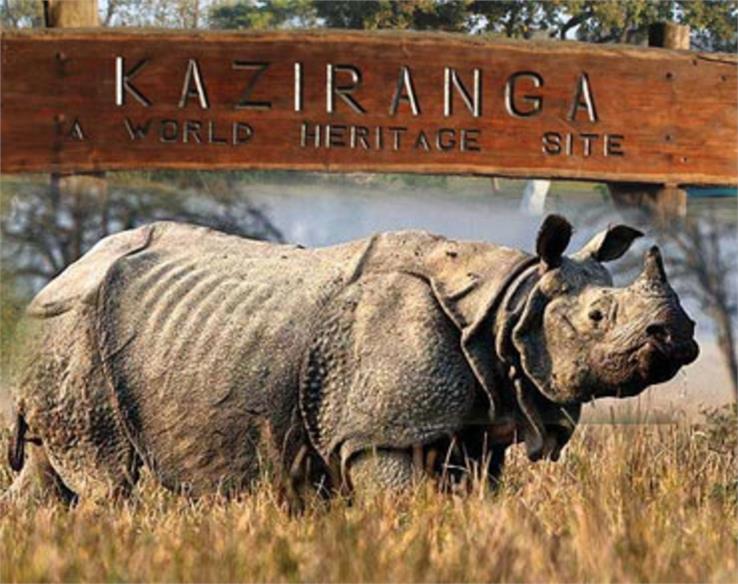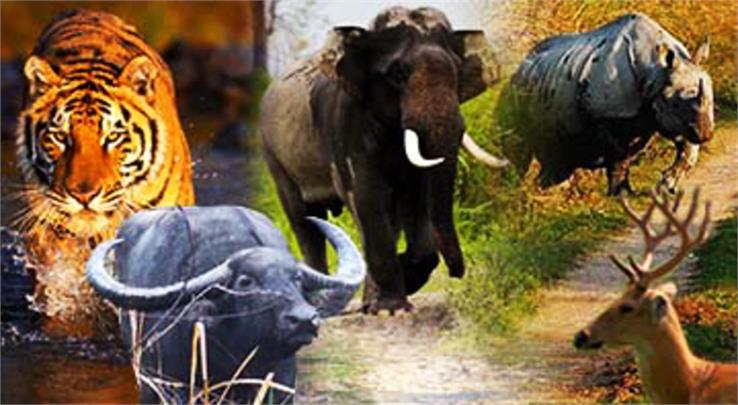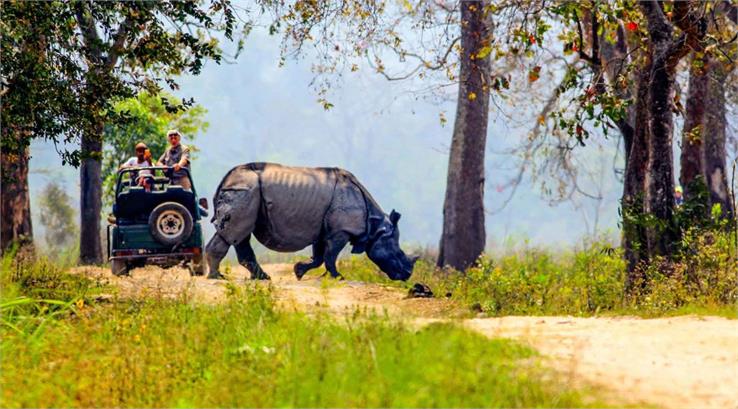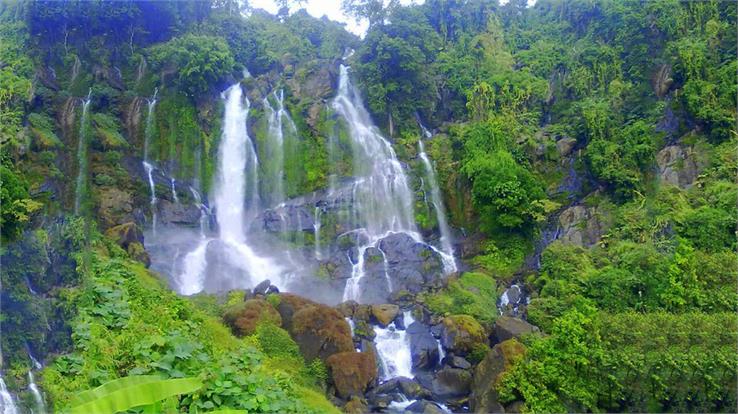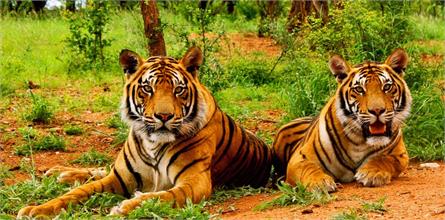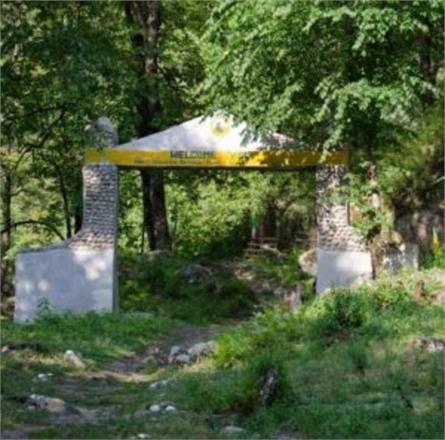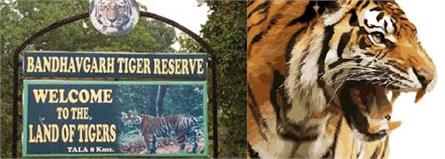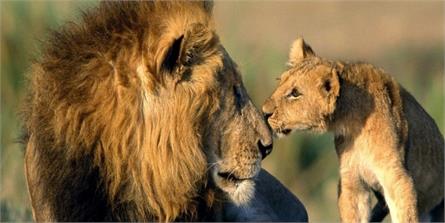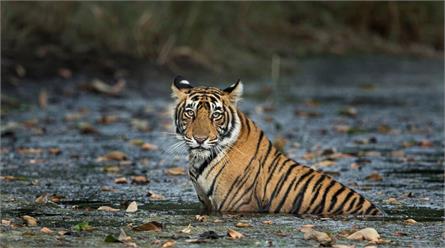Kaziranga National Park
Popular for its great one-horned rhinoceroses, Kaziranga National Park is one of the most famous and must-see attractions in the North East of India. Established in 1908, Kaziranga has been cited as a World Heritage Site by UNESCO since 1985. It is located in the middle of the two districts of Assam state, Golaghat, and Nagaon on the banks of river Brahmaputra. With the total number of 2,413 rhinos (March 2018 Census), it houses two-thirds of the world's one-horned rhinoceroses, which are said to have existed in the Jurassic era. The park covers an area of 430 sq. km with its swamps and tall thickets of elephant grass and brings high species diversity and visibility together.
History of Kaziranga National Park
In 1904, Mary Victoria Curzon, Baroness Curzon of Kedleston, and the wife of Lord Curzon of Kedleston (Viceroy of India) visited the Kaziranga. To her astonishment, she was unable to see any rhinoceros in the park and asked her husband to take immediate measures to protect them. Later, a reserved forest was being constructed, and it was designated as “Reserve Forest” in 1908. The park became open to visitors, and hunting was banned in 1938. It was renamed as “Kaziranga Wildlife Sanctuary” by the forest conservationist P.D. Stracey in 1950. Due to its unique natural environment, it has been given the title of World Heritage Site, as mentioned.
Flora and Fauna

We have already discussed that Kaziranga National Park is well-known for rhinoceros but on top of this, it is also home to the large populations of Royal Bengal tigers, Asian elephants, swamp deer, and wild water buffalo. In point of fact, they are collectively named as 'Big Five' of Kaziranga along with one-horned rhinoceros. Moreover, the park has a total of 35 mammalian species including sambar, Indian muntjac, gaur, Indian gray mongoose, Bengal fox, golden jackal, hog deer, Chinese ferret badgers, sloth bear, leopard cat, large Indian civet, Assamese macaque, Indian gray mongoose, hoolock gibbon, etc. Further, with an array of game birds, migratory birds, predators, and water birds, Kaziranga has been acknowledged as an Important Bird Area. It is home to Baer's pochard duck, Asian openbill stork, grey-headed fish eagle, great Indian hornbill, black-breasted parrotbill, weaver birds, Hodgson's bushchat, Indian white-rumped vulture, amongst others.
Draw your attention: With a population of 118 tigers, Kaziranga was affirmed as a Tiger Reserve in 2006. It has the highest density of tigers in the world.
In addition, two of the world’s largest snakes reticulated python and rock python, plus the longest venomous snake king cobra are found here. Other reptiles, including turtles, tortoises, and water animals with 42 species of fish inhabit the park.
The green space of the park embraces four kinds of vegetation, alluvial inundated grasslands, tropical moist mixed deciduous forests, alluvial savanna woodlands, and tropical semi-evergreen forests. A distinct variety of flora is found between the eastern and western areas of the park with grasslands dominating western reaches. Indian gooseberry, elephant apple, cotton tree, kumbhi are some scattered trees providing cover and shade amidst grasslands. Moreover, common trees and shrubs like Duabanga grandiflora, Mallotus philippensis, Lagerstroemia speciosa, Bridelia retusa, Leea umbraculifera, etc. can be easily seen in the park. Along the river shore, many aquatic plants like water hyacinth give beautiful composition around the lakes and ponds.
Places to see around
Besides Kaziranga National Park, there are several other beautiful places to see around, which are worth visiting.
1. Orchid and Biodiversity Park
Situated at a distance of 2 km from Central Range of Kaziranga, it is the largest orchid park in the Northeast. The park holds a beautiful glory of 500 varieties of wild orchids, 46 species of bamboo, 132 types of sour fruits and leafy vegetables, 12 kinds of cane, and much more.
2. Kakochang Waterfall

It is one of the popular tourist spots located between the Kaziranga National Park and Bokakhat. This waterfall is definitely nature’s gift, which provides the most scenic and pleasing experience.
3. Tea Gardens
Stroll down any of the Tea Gardens around, during your visit to Kaziranga. Obviously, how is it even possible to not experience tea gardens in Assam? They are the true glory and charm of the state, which should not be missed.
4. Bokakhat
This small town is just 23 km away from Kaziranga and is full of historical sites, archaeological remains, monasteries (satras), tourist lodges, temples, hills, natural spots, tea gardens, handloom products, handicrafts, etc.
5. Behora
Immersed in the alluring beauty of nature, this place brings a visual treat for its visitors, which is only 43 km away from the national park.
6. Deopahar
Located at about 50 km from the park, it accommodates Numaligarh ruins. It is popular for its archaeological heritage since the prehistoric period of Assam.
Now, it’s time to explore!
- Safari Adventure
Kaziranga National Park organizes a jeep and elephant safari tour in order to provide you with the best wildlife experience and increase wildlife tourism.
|
S.No. |
Safari Tour |
Morning Time |
Afternoon Time |
|---|---|---|---|
|
1. |
Jeep Safari |
07:30 AM - 09:30 AM |
02:00 PM - 03:30 PM |
|
2. |
Elephant Safari |
05:15 AM - 06:15 AM 06:30 AM - 07:30 AM |
- Bird Watching
- Observing the wildlife
- Hiking
- Explore the motorable trails of Kohora, Bagori, and Agaratoli
Best Time to Visit Kaziranga National Park
The best time to visit the national park is from Mid-November to early April. The park remains closed from 1st May till 31st October every year, and it is open in the other half from November to April for the visitors. It is partially opened in the months of October and May, so it is advisable to check with the authorities while planning in these months.
At the time of monsoons, the park is strictly closed because the Brahmaputra River bursts its banks, which results in overflowing of water into the low-lying grasslands. This causes animals to migrate from one place to another in elevated and forested regions.
Besides this, Kaziranga National Park experiences three variant seasons: -
Summers fall from March to May: The climate is hot with temperatures soaring around 37°. During this time, animals can be easily spotted around water bodies.
Monsoons from June to September: During monsoons, the park witnesses heavy rainfall of about 2,220 mm (87 inches). The area also remains under high alert due to the rising water level of the Brahmaputra. On 3rd August 2016, 70% of the National Park was submerged underwater. The park is closed for visitors at this time.
Winters occurs from November to February: Perhaps the best time to explore this huge green space of nature and wildlife when the climate is mild and dry. The temperature gets low from 25° to 5°.
How to reach here?
1. By Air: Lokpriya Gopinath Bordoloi International Airport in Guwahati and Jorhat Airport are the nearest airports at a distance of approximately 210 km and 114 km, respectively. All the major cities operate flights to/from both airports. Well connected roads are available from the airport to the park. One can hire a taxi or direct cabs from the airport to reach the park.
2. By Train: Furkating (99 km), Jorhat (114 km), Helem (147 km), and Guwahati (190 km) are few nearest railway stations to the Kaziranga National Park. Well-maintained roads are connecting these railway stations to the park, so that you can choose road transportation according to your suitability.
3. By Road: Kaziranga Park (main gate) is situated in the small town of Kohora, which lies on the National Highway 37. NH 37 is easily accessible and well connected to all the major cities of Assam like Guwahati, Jorhat, Golaghat, Tinsukia, Tezpur, Nagaon, Sivasagar, etc. Therefore, Kohara’s Bus Stop is the nearest stop that will take you to the national park.
Tickets and Fares at Kaziranga National Park
|
S.No. |
Tickets |
Fare for Indians (INR) |
Fare for Foreigners (INR) |
|---|---|---|---|
|
1 |
Entry |
50 |
250 |
|
2 |
Vehicle Entry |
200 |
200 |
|
3 |
Camera |
50 |
500 |
|
4 |
Video Cameras |
500 |
1000 |
|
5 |
Elephant Safari |
280 |
750 |
The Jeep Safari costs INR 1000 till Central Range and INR 2000 till Burapahar.
Stay in Kaziranga National Park
For accommodation, there are several homestays and hotels near Kaziranga National Park where you can feel at home and provides great hospitality. Some of them are:

- Jupuri Ghar
- Wild Grass Lodge
- Infinity Kaziranga Wilderness
- Agoratoli Resort
- Iora Resort
- Bonhabi Resort
- Landmark Woods
- United-21 grasslands
So, pack your bags for an exhilarating experience and witness the majestic aura of nature. Are you ready?


